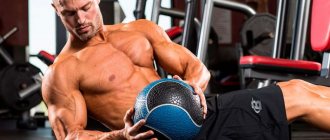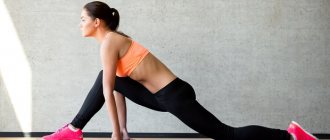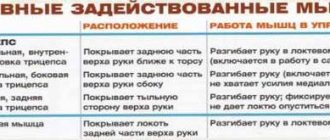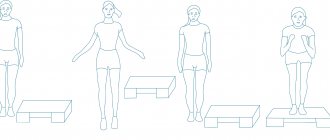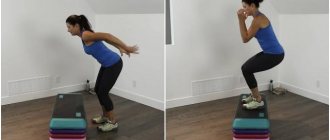© bit245 — depositphotos.com
Share:
Carbohydrate loading (refeed) is a method of accelerated energy replenishment when the body most urgently needs it. This is a common technique in fitness and bodybuilding, especially if the amount of carbohydrates in the athlete’s diet is strictly limited. Don't confuse carb loading with a cheat meal. Refeeds are a gentler form of energy replenishment. During them, you eat only foods rich in carbohydrates (mostly complex ones), and do not load your body with everything. This does not create such a strong load on the pancreas and gastrointestinal tract, but it helps achieve all the same goals:
- Replenishment of glycogen reserves (a source of energy for muscles) in the liver and muscle tissue;
- Unloading of the central nervous system;
- Acceleration of metabolic processes in the body;
- Reducing the constant feeling of hunger during a diet.
Read about how to do carbohydrate loading correctly and how to get the most out of it in our article today.
What is carb loading?
Carbohydrate loading is a special diet with which athletes increase glycogen stores in the muscles and liver during preparation for various competitions - running, cycling, long swimming, cross-country skiing. The body is capable of absorbing about 60 g of carbohydrates per hour from sports nutrition and drinks, which is clearly not enough if you are going to run, drive or swim a long distance quickly.
WEEK 2 (a little more protein)
- p.p.: 3 eggs, a piece of whole grain bread, oatmeal with raisins in milk, any fruit (banana, grapefruit, apple, orange).
- p.p.: vegetable salad, 200 g chicken, protein drink.
- p.p.: vegetable salad, 300 g fish, 2-3 potatoes, 2 tbsp. juice (grapefruit, apple, orange, pomegranate).
- p.p.: a handful of nuts, a handful of dried fruits, a cheese sandwich, a protein drink.
- p.p.: 250-300 g lean beef, brown rice, vegetable salad, a piece of whole grain bread, 2 tbsp. juice (grapefruit, apple, orange, pomegranate).
- p.p. shortly before bedtime: 1 tbsp. kefir
What is the connection between carbohydrates and endurance?
Dr. Monique Ryan, author of Nutrition for Endurance Sports, explains that when you eat a bowl of pasta, most of the carbohydrates are stored as glycogen in the muscles and liver. Glycogen is the most accessible form of energy when covering a distance, but not its only source.
What is glycogen, how does it affect our workouts and is it possible to increase its reserves in the body?
At distances of a half marathon or longer, you burn both glycogen and fat. But fat is a less efficient source of energy, so the body has to work harder to convert it into fuel.
When you run out of glycogen during a race, you hit what's called a "wall": your movement slows as your body tries to convert fat into energy. This is why the correct layout is important when covering a distance, because glycogen reserves are only enough for 90 minutes of intense running.
If you're running a marathon, you need to have a clear idea of an average pace that will burn glycogen and fat in the right proportions and that won't take you to the wall in the second half of the race.
For emotional relief
Diet is always stressful for the body. The main source of energy for our life is glucose, to which all consumed carbohydrates, both simple and complex, ultimately break down. Without glucose, it is difficult for not only the muscles to function, but also the brain, which is why a person often begins to “slow down” during a diet. Abundant intake of carbohydrates corrects this, your health improves, your thoughts become clearer, your body becomes ready to work. For normal functioning, the central nervous system also needs glucose. Having received it, you are psychologically unloaded, irritability, despondency and anger disappear.
In addition, eating carbohydrates promotes the production of serotonin. This is why when a person is in a bad mood or depressed, he craves sweets.
The role of nutrition before long runs began to be studied back in the 60s of the last century.
In the 1960s, athletes began experimenting with nutrition and experimentally found that 3-4 days of no carbohydrates followed by 3-4 days of overeating practically doubled muscle glycogen stores, which made it easier to endure long races. However, such a prolonged restriction in carbohydrate consumption led to gastrointestinal disorders, so athletes continued to explore other options for carbohydrate loading.
By the 1980s, athletes had come to the conclusion that a three-day carbohydrate-loading cycle gave the same effect as an eight-day cycle, without any side effects.
In a 2002 study by the University of Western Australia, professional cyclists pedaled at a high intensity (130% VO2max) for 2.5 minutes, followed by another 30 seconds until failure. The athletes were then given a meal rich in high-glycemic carbohydrates, and within 24 hours, muscle glycogen stores increased by 80% compared to baseline values.
A 2013 study from the University of Minnesota found that if you increased your carbohydrate intake a day and a half before a race, you could improve your first marathon finishing time by 4% relative to your goal. Other factors - age, gender, body mass index - did not have the same effect as changing the diet before the start.
Of course, we cannot ignore the individual factor and the fact that excess carbohydrate consumption increases body weight. Therefore, coach and US record holder among veterans Pete McGill recommends increasing the share of carbohydrates in the diet for the first time to 70% three days before the start and checking the body’s reaction.
What foods can you eat?
What can you eat on a low-carbohydrate diet before a marathon: meat, fish and seafood, eggs, dairy products without added sugar (kefir, butter, milk, cheese, cottage cheese, curdled milk, cream, sour cream), cucumbers, bell peppers.
During loading, the main dish should be foods containing the maximum amount of “slow” carbohydrates: rice, all types of cereals, potatoes, pasta (pasta made from durum wheat), grapes. All products in your usual volume.
“Carbohydrate treats” such as cookies, cakes, chocolate, candies, ice cream, marshmallows and other harmful polysaccharides are not suitable for carbohydrate loading. Your body will not receive anything useful from them except saggy sides.
How to properly load with carbohydrates?
Harvard University professor and amateur marathon runner with a personal best of 2:55 Benjamin Rapoport suggests the following scheme, similar to that used by professional athletes:
- 6 weeks before your marathon: Try eating a little more carbs two days before your long run. You will be able to check which products are suitable for you and which are not. Experiment as part of your preparation for the start. Be sure to check sports nutrition (gels, isotonic drinks) while jogging.
- The week before the marathon: Make a meal plan for the last week and race based on your experience. Decide how many gels and what drinks you will need to cover the distance.
- 2-3 days before the marathon: from this point on, 85-95% of your diet should be carbohydrates only. It's best to load up immediately after training. At this moment, muscles are most actively absorbing glycogen.
- The day before the start: do not overeat. Dinner should be rich in carbohydrates, but there is no need to have a feast. Eat dinner early so you have time to digest everything before going to bed. You should wake up in the morning feeling slightly hungry.
- Morning before the race: 3 hours before the start of the race, eat 150 grams of carbohydrates, such as a bagel and yogurt. If the start is very early in the morning, then get up at 3 am, throw food into yourself and go to sleep for the remaining time.
WEEK 1 (minimal protein)
- meal (p.p.): 1 whole egg, a piece of whole grain bread, oatmeal with raisins with milk.
- p.p.: a handful of any nuts, a handful of dried fruits, a glass (st.) of protein.
- p.p.: vegetable salad, 250 g chicken, 2-3 potatoes, 1 tbsp. juice (grapefruit, apple, orange, pomegranate).
- p.p.: vegetable salad, a piece of whole grain bread, 1 fruit (apple, pear, banana), 1 tbsp. juice (grapefruit, apple, orange, pomegranate).
- p.p.: vegetable salad, 250 g of fish, brown rice, a piece of whole grain bread.
- p.p. shortly before bedtime: 1 tbsp. kefir
Common mistakes
Sometimes amateur athletes misunderstand the essence of carbohydrate loading and make a number of mistakes that ultimately affect their well-being and results:
- Trying to eat on the last day: don’t try to force carbohydrates into yourself on the eve of the start. Eat only as much as your body can handle.
- You should not copy professional athletes: some amateurs begin to repeat the training of experienced marathon runners and, a week before the start, do a long run until their glycogen stores are completely depleted. After this, they continue to train for 3 days without consuming carbohydrates before starting loading. This approach can lead to injury, since low energy will cause you to experience weakness in your muscles and joints.
- Not overeating, but a shift in emphasis: an increase in carbohydrate consumption occurs by replacing other nutrients (proteins and fats), and not by increasing the overall calorie content of the diet. Keep this in mind when creating your meal plan.
- Trying to lose weight right before the start: with carbohydrate loading, for every gram of stored glycogen there are 4 g of water. An increase in body weight during this period is a normal reaction of the body. Don't try to dry out a week before the race. If you want a low competition weight, do it as part of your main training, or better yet, in the off-season.
- Eating plenty of fiber: Not all carbohydrate foods are suitable for loading. Foods such as whole grain bread or vegetables overload the gastrointestinal tract. Ideally, switch to simple carbohydrates - white rice, soft wheat pasta, white bread.
How not to fail all preparation for the start on the last day: simple tips from US record holder Ryan Hall
Using the right nutrition strategy before the start, you can fully realize all the capabilities of your body.
Are you carb loading?
Photo: pexels.com/fotios-photos, mateusz-dach, runffwpu, pixabay, klaus-nielsen
We remind you that we have a discount section where you can find Grow Food promo codes.
To normalize leptin production
Leptin is a hormone that regulates a huge number of digestive processes. In particular, appetite and hunger depend on it. The mechanism of its action is quite complex: it is produced by adipose tissue cells and, by acting on the hypothalamus, blocks the production of a neuropeptide, which creates a feeling of hunger.
If leptin levels are low, you feel hungry. If the amount of carbohydrates is low, leptin levels drop quickly. In order not to constantly overcome hunger and not break down, it is recommended to do carbohydrate loading.
With a one-time large intake of carbohydrates, there will be a surge in leptin. It will decrease gradually, since there is still enough glycogen in the body.
© VectorMine — depositphotos.com. Appetite and hunger hormones (ghrelin and leptin)
Read also
- How to eat before training: what you can and cannot do? How long before classes should you eat?
- Nutrition for gaining muscle mass for men at home
- How to eat properly during training?
- What and when can you eat after training?
- Nutrition for athletes - what can and cannot be eaten by an athlete?
- How will tea help before and after training? Is green healthier than black?
WEEK 3 (lots of protein)
- p.p.: 3 whole eggs + 3 egg whites, porridge (brown rice, oatmeal, buckwheat) with dried fruits in milk, 2-3 pieces of whole grain bread, 1 tbsp. juice (grapefruit, apple, orange, pomegranate).
- p.p.: 2-3 sandwiches with cheese, a handful of nuts, a handful of dried fruits, protein.
- p.p.: vegetable salad, 300-400 g chicken or turkey, brown rice, 2-3 pieces of whole grain bread, 1-2 tbsp. juice (grapefruit, apple, orange, pomegranate).
- p.p.: 2-3 sandwiches with cheese, fruit of your choice (banana, grapefruit, apple, orange), protein drink.
- p.p.: 300-400 g beef, 4-6 potatoes, 2-4 pieces of whole grain bread, 1-2 tbsp. juice (grapefruit, apple, orange, pomegranate).
- p.p.: a handful of nuts, a handful of dried fruits, a protein drink.
- p.p. shortly before bedtime: 1 tbsp. kefir
An example of such a diet
1 meal (pp.) - dense: fruit of choice (banana, grapefruit, apple, orange), oatmeal with dried fruits + 2-3 tsp. flaxseed oil, 2-4 slices of whole grain bread, green tea or rosehip drink with honey.
2 p.p.—light:
- option: cheese or cottage cheese, kefir, fruit of your choice (banana, grapefruit, apple, orange).
- option: protein drink, fruit of choice (banana, grapefruit, apple, orange).
- option: a handful of nuts, a handful of dried fruits, a protein drink.
- option: a handful of nuts, a handful of dried fruits, cheese or cottage cheese, green tea or a rosehip drink with honey.
- p.p. - light: vegetable salad + 2-3 tsp. olive oil, porridge from a grain mixture, 2-4 pieces of whole grain bread, 1-2 tbsp. juice (grapefruit, apple, orange, pomegranate).
4 p.p. before training - light:
- option: vegetable salad, meat, poultry or fish (or any other option from 2 meals).
- p.p. in 20-30 minutes. after training - light: brown rice with raisins and dried apricots.
- p.p. 1 hour after training - light: protein drink, fruit of your choice (banana, grapefruit, apple, orange).
- p.p. - dense: vegetable salad, meat, poultry or fish.
8 p.p. shortly before bedtime - light:
- option: protein drink or kefir.
- option: brown rice or oatmeal with raisins and honey.
Borrowed
Training preparation for bodybuilding and fitness competitions
Bodybuilding Training - A more traditional view of cutting training is already widely known: supersets, dropsets, lots of cardio, lighter weights and higher reps.
But there is another point of view - how can you maintain weight by reducing working weights, and even against the backdrop of a grueling diet? It is more logical not to completely switch to training with light weights. It is better to perform at least 2-3 heavy sets once a week for each muscle group with a significant weight approaching that which you used for mass, but with a stricter and slower technique, since the likelihood of injury is increased on a low-calorie diet. This will allow you to retain the mass, and you can spend the rest of your energy on intensive pumping (normal pumping on a low-carbohydrate diet will still not work), or better yet, posing in front of the mirror and “pushing” the muscles (and improve the relief, and save mass, and posing pull up).
There can be many options for training during the preparation period; below I am posting only one of them (remember that only a program compiled individually gives the maximum effect).
5 Workouts That Are Insanely Effective at Burning Fat
Target
Any physical activity requires carbohydrates for fuel. For most recreational activities, your body uses existing energy reserves. But when you do long, intense workouts, your body needs extra energy. The goal of carb loading is to provide energy to increase your endurance so you can complete your workout set with less fatigue. This, in turn, will affect the size of the glycogen store and increase strength endurance in general.
Back, deltoids, quadriceps - Bodybuilding
Bodybuilding and Proportionality, this is perhaps the main thing. Mass can be increased, quality is also achievable, but the proportions depend not only on proper training, but also on natural features, limb length, skeletal structure, muscle structure. When assessing your proportions, pay attention to the leaders in the categories in which you will compete. Their proportions are most likely close to ideal, and you should, if possible, adjust your body according to the same criteria.
Bodybuilding - Your personal tastes and the opinions of your friends do not matter here, all that matters is what the judges like and what will allow you to achieve prizes. For example, most men work hard to train their biceps and chest muscles. These are, of course, very beautiful and necessary muscle groups, but the most in demand in bodybuilding, the so-called “winners’ trump cards” are just the quadriceps, deltoids and latissimus muscles.
You can win if you have fairly thin arms and lagging pecs, but if you develop an amazing back and deltoids, this is reality and you cannot go against it. If you don’t have legs, deltoids or lats, you shouldn’t even start preparing, first put on yourself a few kilograms of muscle in the indicated places, and only then start thinking about competitions. Life is harsh, without cannonball round shoulders, wide back wings and juicy quadriceps, you can pose at home in front of the mirror, but don’t consider yourself a bodybuilder! Unfortunately, this also applies to a certain extent to women's disciplines (bodybuilding, fitness and body fitness), as well as men who are involved in fitness - the comparison of proportions is carried out almost according to the same pattern. Judges want to see a narrow waist, well-cut legs, developed deltoids and lats. All other muscles are compared secondarily or not at all.
This is not surprising; in the semi-finals more than fifteen participants can appear on stage at the same time. The comparison is based on the main muscle groups, and it is simply not possible to assess the convexity of the calves or the depth of development of each forearm.
But you shouldn’t worry too much about a lack of muscle mass, but with decent relief and acceptable proportions! As practice shows, there is never a lot of muscle mass and it is always not enough. At the end of the day, you need to perform to objectively compare yourself to opponents in your category and get an idea of how many pounds of lean muscle and in what places you need to gain for the next season in order to demonstrate sufficient progress.
Bodybuilding - Step 2: Calculate your time, money, opportunities and everything! You may have the best data, but you won’t be able to achieve anything if you don’t know how to properly organize the preparation process and think through every step in advance. Remember that some conditions are simply necessary for you to be able to successfully compete:
1. You should train regularly, most likely 4-5 times a week, or even more often if posing sessions are added to strength training, practicing a free program with or without a choreographer, cardio training, or stretching classes if you, say, want to decorate your free program program with spectacular splits.
2. You will need regular and carefully balanced meals. You will need to eat egg whites, chicken breasts, fish, rice, dividing it all by portions, by calories, by grams and by hours of consumption. You need to decide in advance who will cook it all, and where it will all be stored during the day.
3. All kinds of sports nutrition, vitamins, amino acids, immunostimulants in tablets and injections must be purchased in advance, in bulk and synchronized with the calendar. You must clearly plan for yourself from what date and what you start injecting yourself and when to start leaning on this or that supplement. I do not advise you to prepare without sports supplements. This is stupid, since the human immune system is not designed for two to three months of grueling training in an almost complete absence of calories, fats, carbohydrates and vitamins.
4. You should immediately balance your budget with the upcoming costs. Don’t forget about money for tickets and accommodation for yourself and your assistant (preferably) who will apply makeup on you and take photographs of you during the performance and preparation for it. By the way, when you are in peak shape, at least one professional photo shoot will not hurt you. After all, such a form may no longer exist, but on the other hand, you will need to compare yourself with your former self if you perform again (for example, in a year).
5. Little things that are needed for a performance become a serious problem in practice if everything is not taken care of in advance. By the way, competition makeup and swimming trunks need to be purchased long before the competition, since at the last moment these goods often become scarce, and the makeup must be purchased with at least one jar in reserve. Sometimes unscrupulous suppliers sell diluted makeup, so you should make sure in advance that it does not flow when applied to the body and has the desired consistency and color. The phonogram must be edited and recorded on disk at the beginning of preparation, and for competitions you will have to take a spare copy of the disk, spare makeup and spare swimming trunks. It’s better to put them in your friend’s bag, since there is nothing more offensive than coming to a competition and not performing because of some little thing (for example, someone’s stupid joke).
Online training program: order the program
6. Don't be afraid to start training too early, if professionals usually take at least six to eight and sometimes ten weeks, then you will probably need 16-20 weeks, given the slow metabolic rate and high percentage of body fat, as well as complete lack of experience.
A program for intensive training of all muscle groups during the “drying” period
Each workout consists of 2 parts: “strength” and “pumping”, first you perform 1 exercise for each muscle group in strength mode (rest between sets for about 3 minutes), the rest of the exercises are already done in a more intense, pumping style (rest between sets reduced to 1 minute).
Bodybuilding training program
Back Bent-over dumbbell row (power) 1/15, 1/10, 2/6, 2/20 Vertical row to the chest 1/15 2/10 Vertical row behind the head 1/10, 1/15, 1/20 Barbell shrugs sitting with light dumbbells 1/20, 1/10, 1/20, 1/30. Upper press with body turns 3/15-20
Chest Bench press on an incline bench (power) 1/15, 1/10, 2/8 Dumbbell bench press on an incline bench 1/15, 3/12 Dips, in a superset with bench press on a horizontal bench 3/25 + 3/ 25 Lower crossover 3/15 Upper crossover 3/15 Seated calf raise 3/15
Legs Leg press (power) 3/10 Seated leg extensions 3/20 + squats with a light barbell (80-90 kg 3/20-25) Superset: Prone leg curls 3/20 + High leg press 3/ 20 Hyperextension 2/20 Rotations at the upper block 2/20
Deltas Sitting bent over swings 10, 10 (power), 20, 20 Sitting swings 15, 10, 10 (power), 20, 20 Standing abductions at the block 3/15 Abductions in the rear deltoid simulator 3/15 Lying on the stomach abductions 3 /15
Arms Close grip press 1/15, 1/10, 2/7-8 (power) Standing supinated curls with dumbbells 3/8 (power) Kneeling extensions with cable handle 15, 10, 8, 15, 20 Arm curls standing with a barbell (21) 3/21 One-arm extension with a reverse grip 3/10-12 Biceps curls with dumbbells lying on the stomach 3/12 Rotations at the upper block 2/20 Hyperextension 2/20
Keto diet - beneficial and negative aspects.
Who is it suitable for?
It should be noted that this type of nutrition is better suited for more experienced athletes, because they will be able to get the maximum benefit from the correct use of alternation. The difficulty is to feel the effect of the diet on your body and adjust the whole process to suit you.
Newbies to the world of fitness who want to try this type of nutrition need to be prepared and not give in to the temptation to include simple carbohydrates in the diet and not pass on loading days. You need to understand that the result will directly depend on self-control and willpower. Please note that it may take several tries to find the rotation cycle that is right for you.
